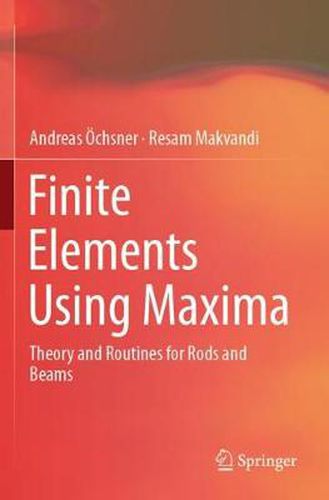Readings Newsletter
Become a Readings Member to make your shopping experience even easier.
Sign in or sign up for free!
You’re not far away from qualifying for FREE standard shipping within Australia
You’ve qualified for FREE standard shipping within Australia
The cart is loading…






This book provides a study aid on the finite element method. Based on the free computer algebra system Maxima , it presents routines to symbolically or numerically solve problems in the context of plane truss and frame structures. This allows readers to not only check classical hand calculations but also understand the computer implementation of the method. The mechanical theories focus on the classical one-dimensional structural elements, i.e. bars, Euler-Bernoulli and Timoshenko beams as well as their combination to generalized beam elements. Focusing on one-dimensional elements reduces the complexity of the mathematical framework and the resulting matrix equations can still be displayed with all components, and not only in a symbolic representation. The use of a computer algebra system and the incorporated functions, e.g. for equation solving, highlights the methodology of the finite element method rather than standard procedures. The book is based on the Springer Brief Finite Elements for Truss and Frame Structures (978-3-319-94940-6) by the same authors.
$9.00 standard shipping within Australia
FREE standard shipping within Australia for orders over $100.00
Express & International shipping calculated at checkout
This book provides a study aid on the finite element method. Based on the free computer algebra system Maxima , it presents routines to symbolically or numerically solve problems in the context of plane truss and frame structures. This allows readers to not only check classical hand calculations but also understand the computer implementation of the method. The mechanical theories focus on the classical one-dimensional structural elements, i.e. bars, Euler-Bernoulli and Timoshenko beams as well as their combination to generalized beam elements. Focusing on one-dimensional elements reduces the complexity of the mathematical framework and the resulting matrix equations can still be displayed with all components, and not only in a symbolic representation. The use of a computer algebra system and the incorporated functions, e.g. for equation solving, highlights the methodology of the finite element method rather than standard procedures. The book is based on the Springer Brief Finite Elements for Truss and Frame Structures (978-3-319-94940-6) by the same authors.